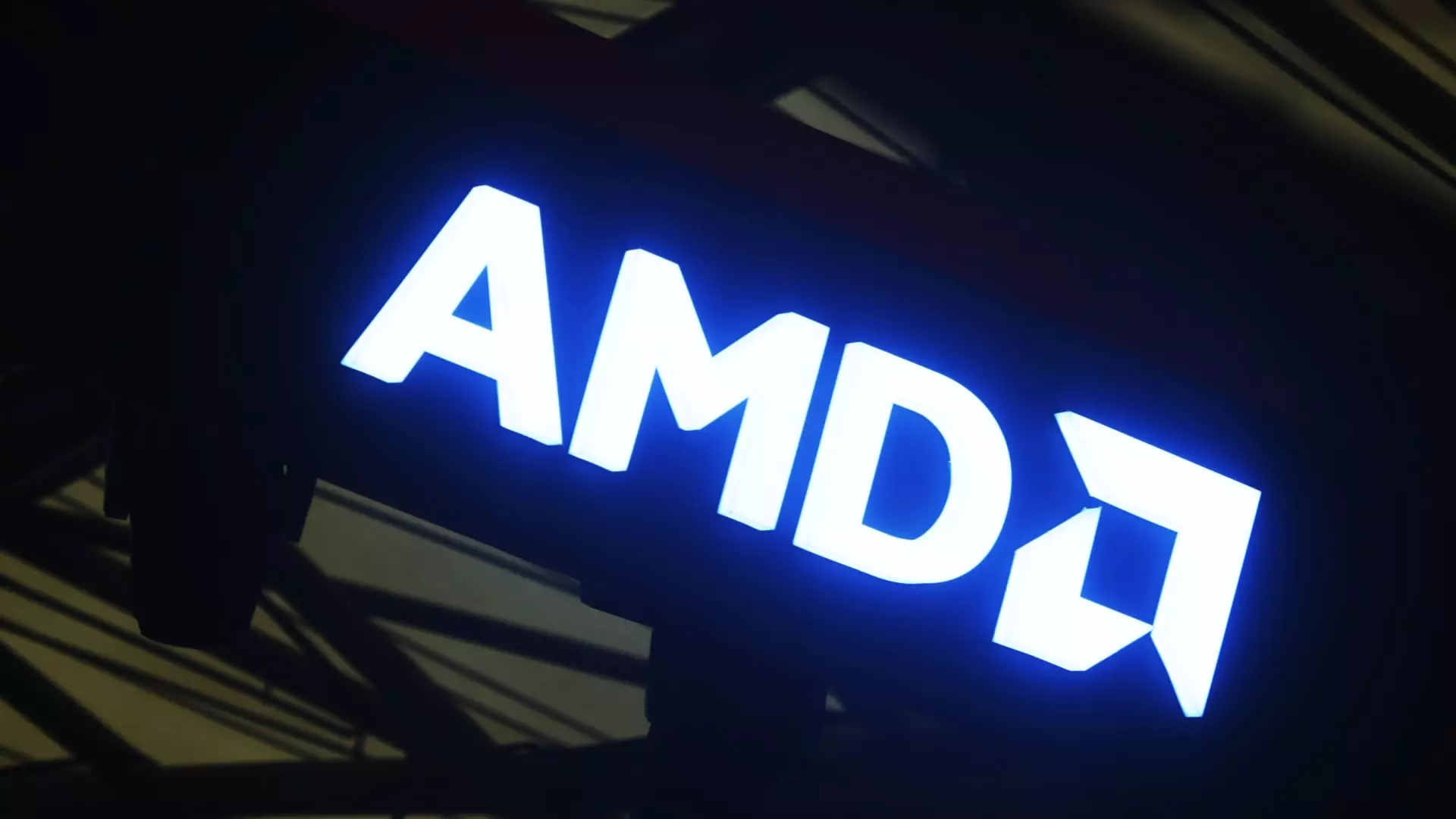In the tumultuous environment of the semiconductor industry, Advanced Micro Devices (AMD) stands at a crossroads. Recent downgrades by analysts signal troubling trends that may put AMD in a precarious position compared to its competitors. KeyBanc’s John Vinh has released a concerning evaluation, downgrading AMD to a state of “sector weight.” While Intel and Nvidia continue to push boundaries with aggressive tactics, AMD appears to be trapped in a quagmire of price wars and diminished revenue forecasts. This situation raises questions about AMD’s long-term viability and market share—especially as we look ahead to what 2025 could bring.
The Price War: A Battle for Survival
Vinh’s assessment reflects an industry rife with fierce competition, particularly from Nvidia and Intel. With Nvidia maintaining a lead in artificial intelligence (AI)-related chip demands, AMD’s foothold seems more precarious than ever. As AMD struggles with declining gross margins, it’s clear the company is caught in a price war initiated by Intel. The fragile equilibrium of pricing strategies is reminiscent of a battlefield where casualties could include not only profit margins but also future technological advancements. Vinh warns that AMD may be forced to respond to Intel’s aggressive price cuts, creating a cycle of price reductions that could decimate their gross margins.
One of the significant threats looms large in Intel’s recent release of the Lunar Lake mobile processors that promise efficiency and performance. Should AMD fail to counter these advances effectively, the odds favor Intel in the quest for market share. Thus, it’s imperative for AMD to devise a strategy that not only maintains its current market position but also paves the way for future innovations—something that appears increasingly challenging given current circumstances.
China: A Double-Edged Sword
Adding to AMD’s challenges is the uncertainty surrounding its China operations. Analysts, including Vinh, express skepticism regarding the sustainability of AI demand within the Chinese market. Stricter export regulations could further inhibit AMD’s ability to thrive amidst roaring Chinese demand. The potential slowdown signals a landscape littered with hidden dangers, primarily stemming from geopolitical tensions. With the market volatility in China growing by the day, AMD’s reliance on Chinese hyperscalers poses not only risk but also a critical dilemma. As the current world order leans into protectionism, continued access to one of the largest tech markets remains in jeopardy.
Furthermore, with Vinh estimating possible stagnation in AI GPU growth, AMD’s chips could face diminishing trajectories, specifically excluding the high-revenue-generating Chinese segment. For a company that thrives on innovation and high growth, these metrics point to a rather bleak horizon. Surviving these market currents will require AMD to pivot sharply or risk being left behind.
Analyst Sentiment: Conflicting Perspectives
Despite the derisive outlook presented by Vinh, the cloud isn’t entirely dark for AMD. There remains a battalion of analysts—32 out of 50—still buoyant on AMD stocks, painting a picture of potential resurgence. The average price target suggests a staggering upside of over 70%. Such optimism necessitates scrutiny; is it grounded in solid fundamentals or merely speculative hope? The disparity in analyst sentiment underscores the intrinsic volatility that characterizes the semiconductor market.
Such conflicting viewpoints often arise in hyper-competitive industries, where sentiment can shift upon a single innovative breakthrough or strategic pivot. While AMD still holds promise, the caution expressed by analysts like Vinh indicates that the tides could turn swiftly.
Final Thoughts on AMD’s Positioning
As we reflect on the multifaceted pressures confronting AMD—ranging from pricing wars and competition to geopolitical volatility—one must question the roadmap ahead for the chipmaker. Though AMD has long positioned itself as a formidable player in the semiconductor space, recent developments illustrate that without strategic foresight and agility, it might find itself stranded on the margins of technological progress. The gravity of the situation cannot be overstated: the risk of obsolescence due to entrenched competition coupled with external market factors is increasingly viable, creating a daunting challenge for a company that once thrived on disruption.
In this ongoing saga of innovation and competition, AMD’s ability to recalibrate its strategy will dictate whether it can reclaim its stature or succumb to the pressures of an unforgiving market landscape.


Leave a Reply